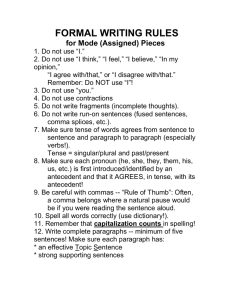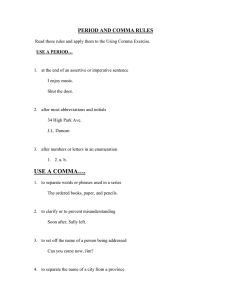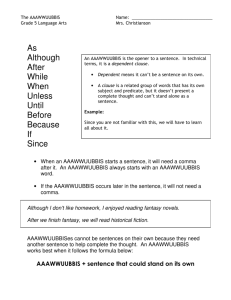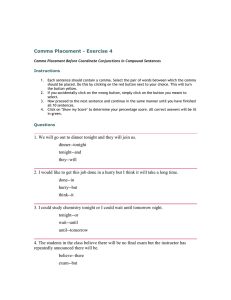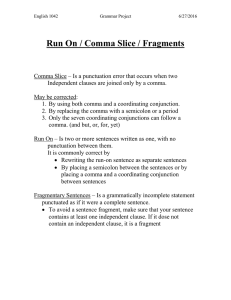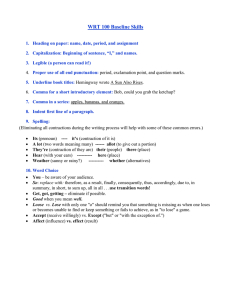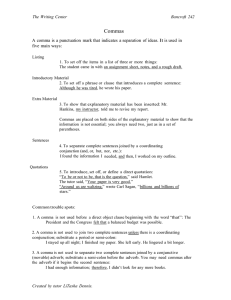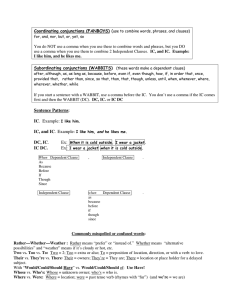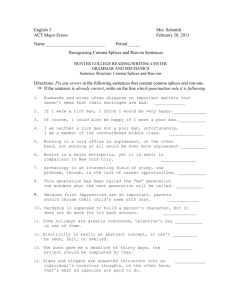Writing styles
advertisement
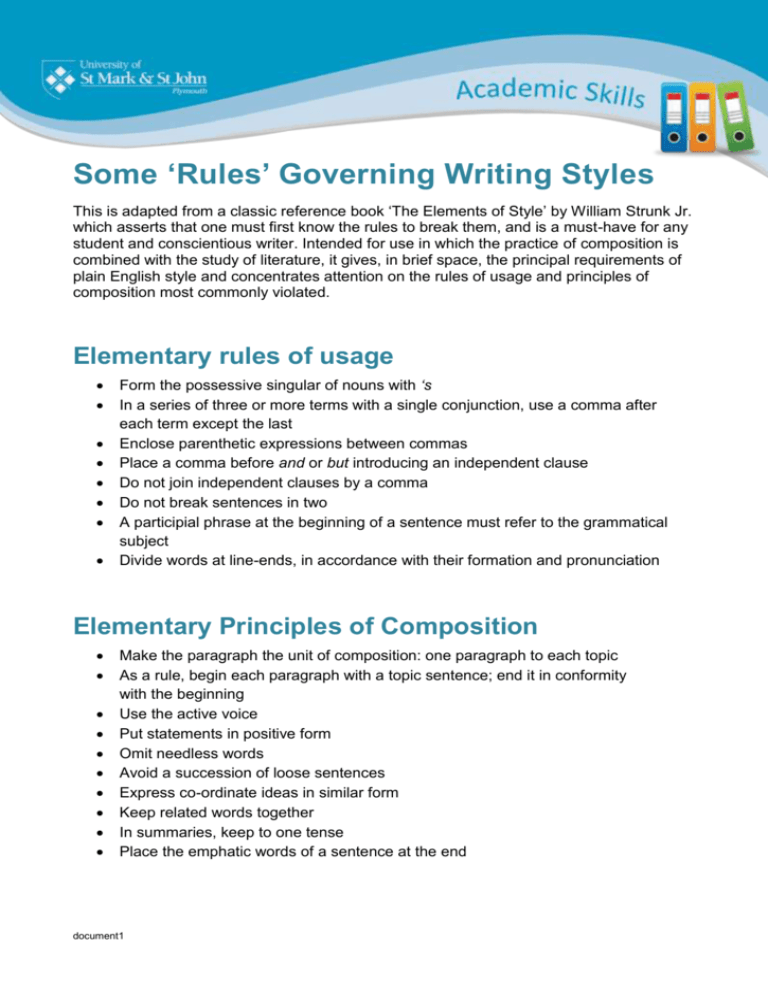
Some ‘Rules’ Governing Writing Styles This is adapted from a classic reference book ‘The Elements of Style’ by William Strunk Jr. which asserts that one must first know the rules to break them, and is a must-have for any student and conscientious writer. Intended for use in which the practice of composition is combined with the study of literature, it gives, in brief space, the principal requirements of plain English style and concentrates attention on the rules of usage and principles of composition most commonly violated. Elementary rules of usage Form the possessive singular of nouns with ‘s In a series of three or more terms with a single conjunction, use a comma after each term except the last Enclose parenthetic expressions between commas Place a comma before and or but introducing an independent clause Do not join independent clauses by a comma Do not break sentences in two A participial phrase at the beginning of a sentence must refer to the grammatical subject Divide words at line-ends, in accordance with their formation and pronunciation Elementary Principles of Composition Make the paragraph the unit of composition: one paragraph to each topic As a rule, begin each paragraph with a topic sentence; end it in conformity with the beginning Use the active voice Put statements in positive form Omit needless words Avoid a succession of loose sentences Express co-ordinate ideas in similar form Keep related words together In summaries, keep to one tense Place the emphatic words of a sentence at the end document1
